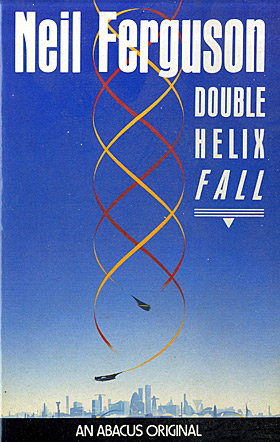San Francisco after the Great Quake. Life after America: a post-world controlled by the computers in the Protocol Organisation, where a person’s status in society is determined by in utero readings taken before their birth. With free will a federal offence and the population doped out on TV soap episodes of the President’s family, what hope is there?
None. Old Gottlieb Sollyheim, the genetic physicist who played his part in engineering this society, is dead. Annie Bernier, the president’s daughter who is running away from it, is also dead. Even Rick Stater, the private detective who is running after Annie Bernier, is dead. In fact, everyone is dead. Including the President.
Until the Zappers, outlaws outside the system, decide to play poker with the determinacy of the DNA in their chromosomes, defying the Protocol’s supremacy every time they perform the lovely and lethal Double Helix Fall….
Reviews
This harrowingly close homage to Philip K Dick could easily be one of the “lost” Dick manuscripts now residing in the University of Texas. The entire novel replicates the Dick world, with all its obsessions, its venue (California), its paradigm mental illness as analytic metaphor for the state of America (schizophrenia), its vocabulary, its domineering wives and appealing singles, its high-affect robots etc… The book is densely and intriguingly set up to provide frequent parabolic insights into human life in the post-industrial world. The plot is worked out with a high control of pace and contrast. The characters are highly differentiated. There is a glow of sexuality. There are some funny moments. There are shocks and reversals. It is a Dick novel. It isn’t one of Philip K Dick’s best books, but it is by no means one of his worst. John Clute, Editor, The Encyclopedia of Science Fiction
Londoner Neil Ferguson wrote the cult novel Putting Out and the intelligence and wit of this one shows him to be something of a home-grown Philip K Dick. Sunday Times
Neil Ferguson’s second exercise in structuralist science fiction after Putting Out sees him trading in many of the themes which marked out his earlier novel for cult success: semiotic detection, trial by television, the revolving media whirligig of politics and style. He knows his theory and is expert at providing the critical commentary to his own text. Luckily he throws in enough brightly coloured trash along the way – a tragic Bogart cyborg, a Patty Hearst runaway, a renegade CIA director – to make it all an engaging read. Clever. ID Magazine
